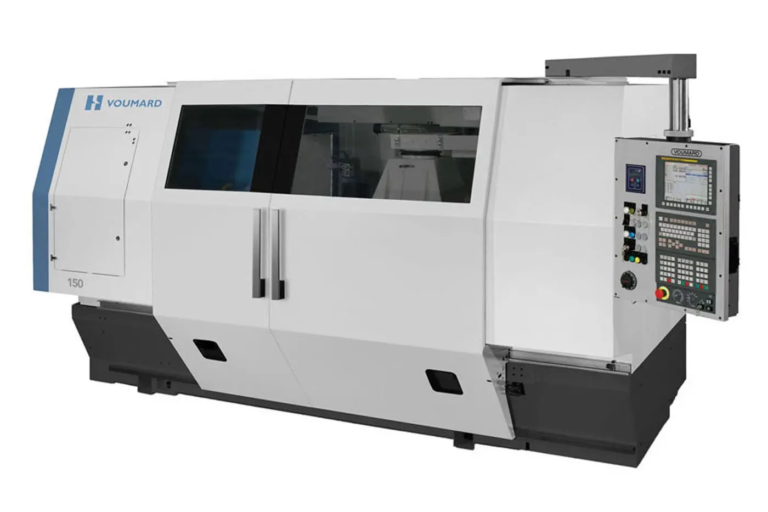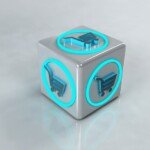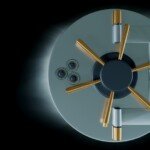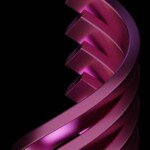Unveiling CNC processing costs: Your comprehensive hourly rate guide
Navigating the CNC machining world requires understanding its financial landscape. One of the most common problems we have at Greatlight is "How much does CNC processing cost per hour?" While it is easy to seek a simple number, reality is even more subtle. Hour rates are key indicators used throughout the industry to calculate part costs, but they are affected by the interaction of complex factors. Take the time to master these variables so that you can make smarter decisions, optimize your projects and ultimately get the best value. This guide can help you with budgeting effectively by unpacking all the information you need about the cost of CNC machining hours.
Why do you need an hourly rate? More than just hours on the machine
Understanding citations is essential "Hourly rate" It’s not just paying for the time the spindle is cutting the material. Think of it as a comprehensive operating cost recovery fee. This rate is bundled with:
- Machine depreciation and investment: CNC machines, especially the advanced five-axis system widely used on Greatlight, represent important capital expenditures. The hourly rate factor of the cost of acquiring such high-precision equipment is distributed over its operating life.
- Tools and consumables: CNC machining consumes cutting tools, tool holders, coolant, lubricant and other operating supplies. Wear and final replacement are large cost components that incorporate rates.
- Facilities and Utilities: Including maintenance of climate control, well-equipped facilities, and the cost of large amounts of electricity and compressed air consumption required to run a powerful CNC machine.
- Labor and expertise: In addition to operator startup machines, rates cover salaries of highly skilled programmers, engineers (such as teams specializing in complex geometries), quality control personnel, and administrators. Advanced five-axis programming expertise command advanced.
- Elevated and Maintenance: Regular maintenance, calibration (critical for accuracy), software licenses (CAM programming), insurance and management overhead contribute to the operating costs covered by hourly rates.
Key factors driving hourly rates for CNC machining
understand Why Prices vary and are the key to managing your costs:
-
Machine Types and Functions:
- 3-axis machine: Usually the most affordable hourly rate. Limited to machining from three sides of the part.
- 5-axis machine: Due to significantly higher complexity, cost, programming requirements and setup requirements, the five-axis machining command advanced hourly rates. However, it eliminates multiple settings and allows complex parts in a single operation, reduce Comprehensive Parts cost and time.
- Mill Center: Combining milling and turning provides unique advantages, but is usually above standard 3-axis milling or stand-alone lathes.
- Size and Strength: Larger machines with higher horsepower (usually required for solid metal) usually have higher operating costs and associated prices.
-
Part complexity: Simple parts with direct tool paths are cheap. Highly complex geometry requiring complex toolpaths, tight tolerances (+/- 0.0002" and beyond), fine surface finishes and depth features greatly increase processing time and Higher skills are required to program and operate, thereby increasing effective costs.
-
Material selection: Processing aviation-grade titanium consumes tools much faster than prototype plastics. Harder, stronger, stronger or larger abrasive materials can greatly increase tool wear rate and processing time, thereby increasing costs. Material waste (chip/SWARF) is also a factor.
-
Geographic location: Operating costs vary worldwide. Stores in areas where labor, real estate and utilities are more expensive will often reflect this compared to stores in lower-cost areas. (However, proximity may offer benefits such as reducing shipping costs and time).
-
Store expertise and capacity utilization: A well-known store with good expertise, extensive experience (especially in specific segments such as medical or aerospace) and strict quality certification can direct higher rates based on the value it provides. Demand (store workload) can also affect pricing.
- Quantity and production length: Higher parts extension initial setup, programming and fixture costs exceeding more units, making it effective Parts Cost Lower, even the base Hourly rate Stay constant. Prototypes and small batches are the first to be run.
Typical CNC machining hourly rate range (approximately):
- Basic 3-axis milling/lass: $50- $100+ per hour
- Middle 3/4 axis milling/lass: $75- $150+ per hour
- Entry-level 5-axis milling: $100- $180+ per hour
- High-end/advanced 5-axis milling: $150- $250+ per hour
- Complex multi-axis mill steering center: $125- $225+ per hour
These are broad estimates. Depending on the specific factors mentioned above, actual quotes may be outside these ranges. Five-axis machiningand at the same time higher every hour speedusually brings higher value to complex parts by reducing parts Total processing time and operation quantity Required.
Strategies for optimizing CNC processing costs
In terms of cost optimization, knowledge is the power:
- Manufacturing Design (DFM): cooperate Early With your suppliers (such as the engineering team at Greatlight). Simplify functions where possible, standardize pore sizes, avoid deep cavity using small tools, and specify tolerances only within range Absolutely Critical. Pre-adjusting of small designs can result in significant savings.
- Material selection: Select materials that meet functional requirements at the lowest reasonable cost. Is aluminum substitute less expensive to replace titanium? Consider the processability level.
- Batch production: Combining orders will increase quantity and greatly reduce setup costs. Negotiable quantity discount.
- Standardization and simplification: Use stock sizes slightly higher than the finished product size to minimize material waste. Use standard tool sizes in your design.
- A wise partner: Select one with The right technique For your parts. Don’t pay a premium five-axis rate for parts that simpler machines can handle well. Instead, forcing complex parts to a machine on a three-axis machine can incur higher costs due to multiple setups and potential fixing needs. Find partners who provide comprehensive services such as Greatlight’s one-stop post-processing to simplify your supply chain.
Why choose the accuracy of Greatlame?
At Greatlight, we are proud to leverage cutting-edge five-axis CNC technology no Just to add functionality, but to provide tangible cost and efficiency advantages:
- Advanced five-axis power: Our complex equipment greatly reduces setup time and handles complex geometric shapes perfectly in one breath. This usually translates into faster turnaround and Reduce total cost For multi-stage processes on simple machines, complex parts.
- Deep material expertise: We handle a wide range of metals and engineering plastics efficiently and provide advice on the best choices to balance costs and performance.
- Integration post-processing: Our one-stop service includes secondary operations (heat treatment, anodization, painting, etc.), eliminating the delays and costs associated with managing multiple suppliers.
- Optimized for your needs: We do not apply a certain degree of all rates. We analyze your specific part geometry, material, volume and tolerances to determine the most efficient (and cost-effective) machining strategies and it is possible to use different machine types appropriately.
- Focus on long-term value: We build partnerships. By combining advanced technology, skilled engineering (solving complex manufacturing problems) and simplified processes, we provide high-quality precise parts at consistent competitive prices.
in conclusion
Understanding CNC machining hourly rates is critical to an accurate budget and building successful projects. Rather than focusing on the numbers per hour, dig deep into the factors behind it – machine capability, part complexity, material, volume and store expertise. Remember that the lowest hourly rate does not always equal the lowest total part cost, especially for complex components. Although five-axis machining increases higher interest rates, it can be very effective and greatly reduces the total project cost. By adopting smart design principles, selecting the right materials, and working with Greatlime’s technologically advanced and solution-oriented manufacturers, you can unlock significant cost savings without compromising precision or quality. Ready to experience a cost-effective high-precision manufacturing industry? Start your custom parts quotes today with “Greatlime”.
FAQ (FAQ)
-
Q: What is the first factor affecting the cost of CNC processing?
- one: There is no one #1 factor. complex (Driving machining time and required skills) and Material selection (Impact tool wear and machining time) In addition to the inherent store/machine racking rate, it is usually the main variable cost drive. The high complexity of tough materials is the most expensive combination.
-
Q: How does five-axis machining justify its higher hourly rate?
- one: Although the rate per hour is higher, five-axis machining excels in reducing Total production time For complex parts. By machining from almost any angle in a single setup, it eliminates multiple fixtures and settings inherent in the 3-axis process. This saves setting labor and reduces cumulative processing time Each sectionimproves accuracy (no re-fix errors), and often results in lower Total cost per partespecially for complex geometric shapes.
-
Q: Is processing aluminum obviously cheaper than steel?
- one: Generally speaking, Yes. Due to its lower hardness and better chip formation, aluminum is much easier and faster than most steel machines. This means longer tool life and faster cutting speeds, resulting in lower machine time costs. Steel machining requires slower speeds, stiffer tools, and often higher power consumption, resulting in higher hourly cutting time and faster tool replacement.
-
Q: How does order volume affect hourly costs?
- one: and Machine hourly rate It may be relatively stable for a specific store/machine itself, Large capacity greatly reduces the cost of each part. This is because fixed costs (programming, CAM time, setting, creation of fixtures) are distributed in many parts. Small batches of work are completely the first to bear the brunt of these initial expenses.
-
Q: Are there any hidden costs that exceed the processing hourly rate?
- one: The processing costs of the citation should ideally be comprehensive, but make sure you confirm what is in it. Potential additional costs are not always clear for quotes, including: material costs (quotations requiring shear), specialized tools or fixtures specially purchased for your job, extensive post-processing (glitches beyond standard), complex programming, for unusual geometry or accelerated transportation.
- Q: How to obtain the most accurate cost estimate?
- one: To manufacturers (just like Greatlight) Complete technical package: A detailed 3D CAD model (step, IGES), a 2D diagram of clearly specified critical dimensions and tolerances, selected material grades, surface finish requirements and required quantities. The more information you provide in advance, the more precise the quote will be. Have a conversation about the possibility of DFM.


















